
hotline:
17715390137
Tel/Wechat:
18101240246 (Technology)
0512-68565571
Email:mxenes@163.com (Sales Engineer)bkxc.bonnie@gmail.com
Scan the code to follow or search the official account on WeChat:
2D Materials Fronrier After paying attention,
click on the lower right corner to contact us,
Enter enterprise WeChat.
Professional Services Online

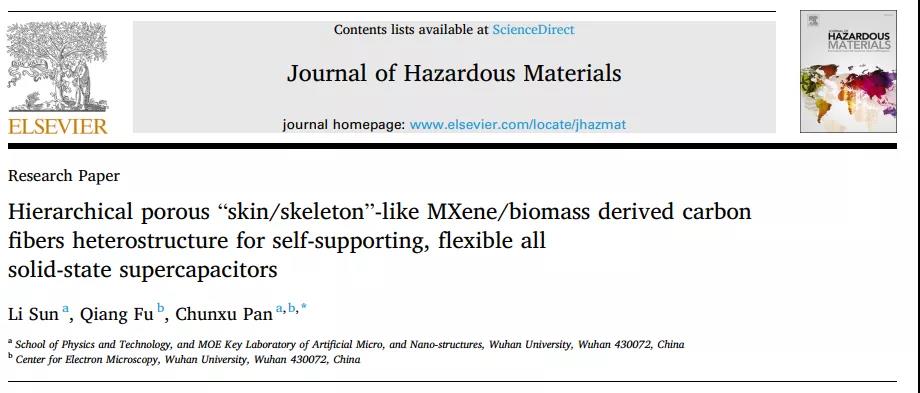

As an energy storage device with high power density and long cycle life, flexible all-solid supercapacitors have attracted widespread attention in the field of modern wearable electronic products. Among them, the flexible electrode is the most critical factor. It requires not only good conductivity and high capacitance, but also good flexibility. At present, the commonly used electrode materials mainly include carbon nanotubes, graphene, other carbon-based materials, and some pseudocapacitance active materials (Co3O4, NiO, PPy, etc.). However, there are still many challenges, such as carbon materials with good conductivity and stability but low capacitance, and pseudocapacitance materials with high capacitance but poor conductivity and stability. Therefore, the design of composite electrodes is an important way to make up for the shortage of single electrode materials.

Recently, Professor Pan Chunxu and Dr. Li Sun of Wuhan University published an article titled Hierarchical Porous “Skin/Skeleton”-Like MXene/Biomass Derived Carbon Fibers Heterostructure for Self-supporting, Flexible All Solid in the Internationally renowned academic journal Journal of Hazardous Materials. -A research paper by State Supercapacitors. This article reports a simple method to prepare layered "skin/skeleton" MXene/biomass-derived carbon fibers ( MXene/CF) heterostructure. In MXene/CF, Ti3C2Tx nanosheets not only cover the CF surface, but also act as a bridge between the CFs. This newly designed structure weakens the stack of Ti3C2Tx nanosheets and constructs a layered porous structure electrode that allows ions to enter quickly. MXene/CF combines high conductivity Ti3C2Tx nanosheets to provide an effective and stable channel for electron transmission. When the MXene/CF heterostructure is used as a self-supporting electrode in a supercapacitor, the electrode has high mass and volume capacitance, excellent rate performance and good cycle stability. In addition, solid symmetrical supercapacitors can be deformed arbitrarily, and there is no significant change in electrochemical performance. The preparation of porous "skin/skeleton"-like MXene/CF heterostructures provides a new strategy for the design and manufacture of wearable electronic devices to further meet the requirements of sustainable development.


Figure 1. Schematic diagram of MXene / CF synthesis
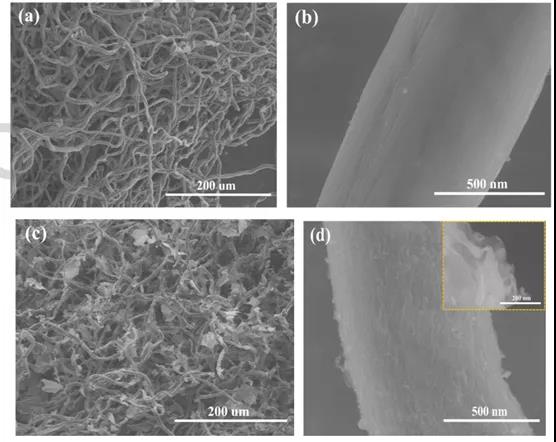
Figure 2. SEM images of (a)-(b)CF; (c)-(d) MXene/CF
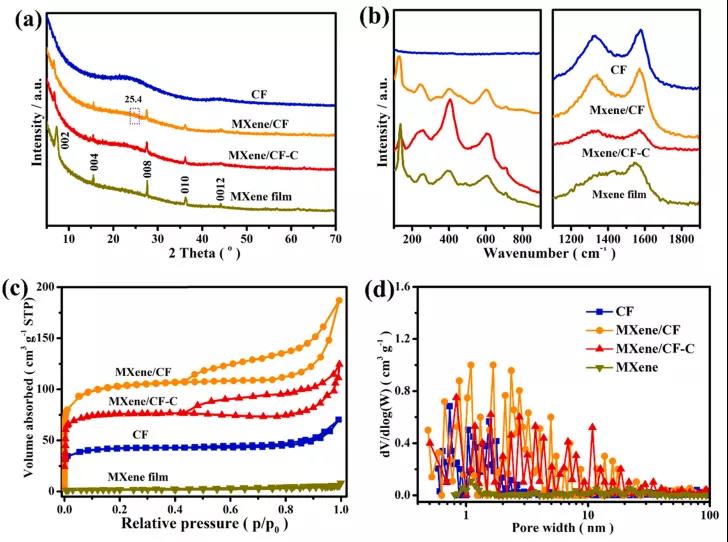
Figure 3. Microstructure characterization of the sample: (a) XRD pattern; (b) Raman spectrum; (c) N 2 adsorption-desorption isotherm; (d) pore size distribution.

Figure 4. (a) XPS diagram, (b) Ti 2p and (c) MXene/CF contact angle
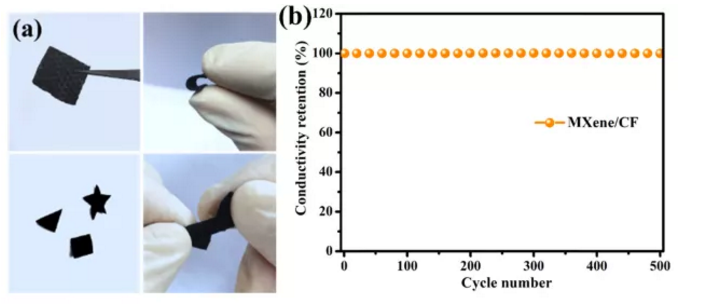
Figure 5. Mechanical and electrical properties of MXene/CF: (a) Digital image; (b) Maintain conductivity under bending conditions
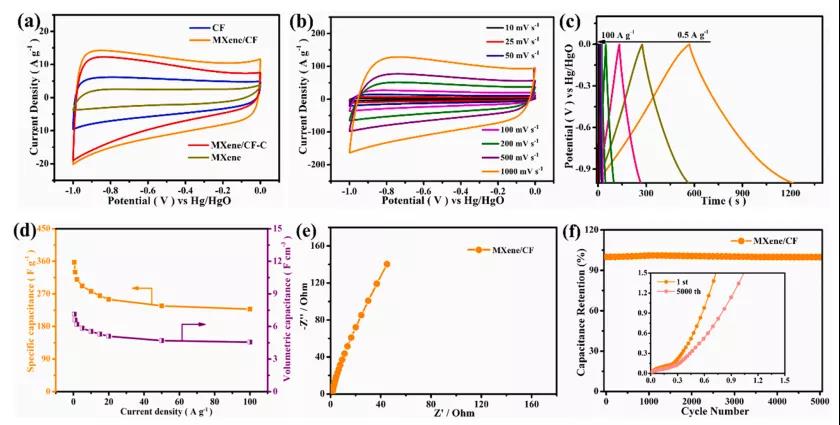
Figure 6. Electrochemical performance in a three-electrode device in 6 MKOH
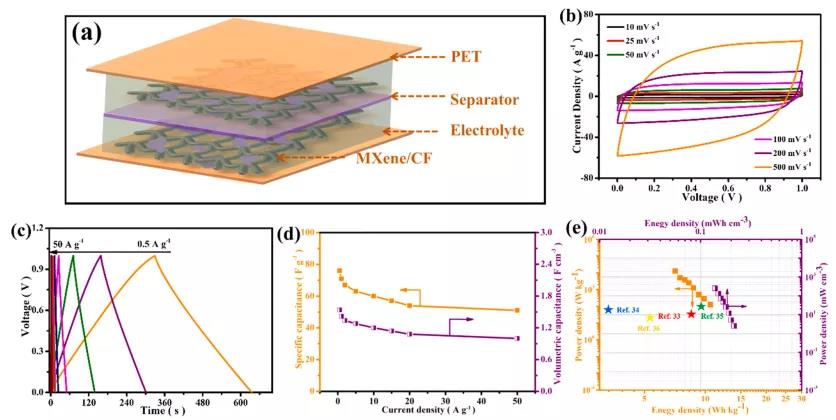
Figure 7. Electrochemical performance of MXene /CF-SSC
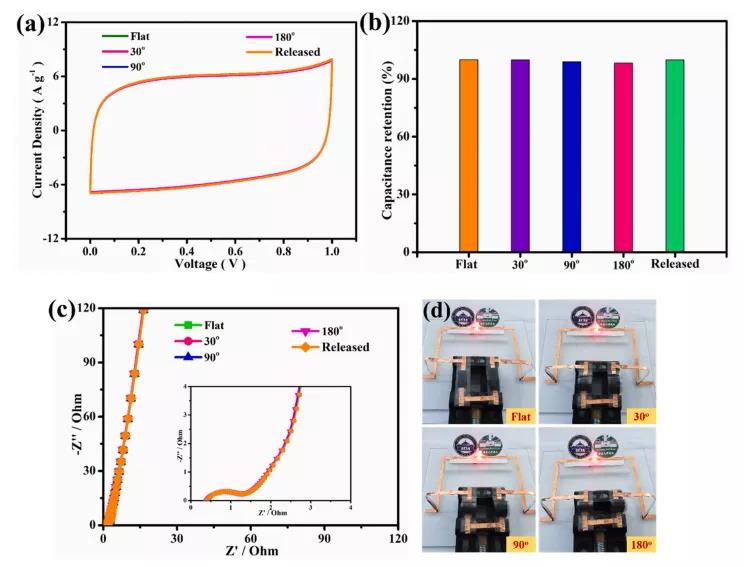
Figure 8. Electrochemical performance of MXene /CF-SSC under different bending conditions

In this paper, one-step pyrolysis of CFW impregnated with MXene solution is used to prepare a layered "skin/skeleton" MXene/CF heterostructure. The “skin/skeleton”-like heterostructure combines the stable flexibility of CF and the excellent conductivity of MXene. CF supports MXene nanosheets to construct a porous network, thereby effectively inhibiting the self-accumulation and aggregation of MXene, and promoting the rapid diffusion and transfer of electrolyte ions. The heterostructure reduces the internal resistance, which facilitates the efficient and rapid transmission of electrons during the charging/discharging process, and ensures high power output. When the MXene/CF heterostructure is used as a self-supporting electrode of a supercapacitor, the capacitance value of the electrode is 7.14 F cm -3 and 357 F g -1 at a current density of 0.5 A g -1 and a current density of 100 A g -1 still showed a capacity retention rate of 63.9%. In addition, MXene/CF electrode has excellent cycle stability (almost no capacitance decay after 5000 cycles). The MXene / CF-SSC device shows a high energy density of 0.22 mWh cm -3 (10.6 Wh kg -1) and 250.2 W cm -3 (maximum power density of 12780 W kg -1), which is much higher than the previously reported water Carbon-based and MXene-based supercapacitors in the electrolyte. Even after 2500 cycles under different bending angles, MXene / CF-SSC still has good flexibility, maintaining structural integrity and high capacitance. Due to improvements in electrochemical performance and structure, this work provides a way to design and develop high-performance, flexible, wearable and portable MXene-based energy storage devices in the future.
Literature link:
https://doi.org/10.1016/j.jhazmat.2020.124565
Information source: MXene Frontie
This information is from the Internet for academic exchanges. If there is any infringement, please contact us and delete it immediately

| Reminder: Beijing Beike New Material Technology Co., Ltd. supplies products only for scientific research, not for humans |
| All rights reserved © 2019 beijing beike new material Technology Co., Ltd 京ICP备16054715-2号 |